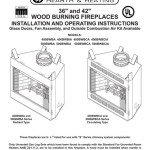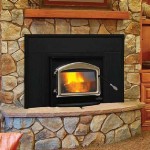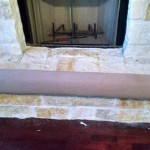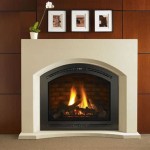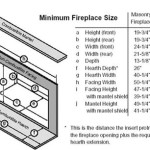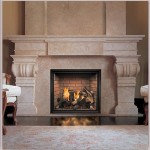How Efficient Are Electric Fireplace Inserts?
Electric fireplace inserts have become increasingly popular as a convenient and aesthetically pleasing alternative to traditional wood-burning fireplaces. They offer the visual appeal of a fire without the mess, maintenance, and safety concerns associated with conventional fireplaces. However, a critical factor for many consumers considering an electric fireplace insert is its energy efficiency. Understanding the efficiency of these units requires a thorough examination of their heating mechanisms, operational costs, and comparison to other heating options.
Electric fireplace inserts function by converting electrical energy into heat. Most models utilize either resistance heating or infrared heating technology. Resistance heating involves passing an electric current through a metal coil, which heats up and radiates warmth into the surrounding area. This is a relatively simple and common method. Infrared heating, on the other hand, uses infrared lamps to generate heat that directly warms objects and people in the room, similar to the way the sun heats the earth. This method is often perceived as more efficient because it focuses heat on specific areas rather than heating the entire room.
Determining the efficiency of an electric fireplace insert involves considering several factors, including its wattage, heat output, and the specific heating technology employed. Efficiency isn't just about how much heat the unit produces, but also how effectively it uses electricity to generate that heat. This article will explore the key aspects of electric fireplace insert efficiency, providing valuable insights for consumers seeking to make informed purchasing decisions.
Understanding Energy Consumption and Heat Output
One of the primary ways to assess the efficiency of an electric fireplace insert is by examining its energy consumption and heat output. Electric fireplaces are typically rated in terms of watts and British Thermal Units (BTUs). Watts measure the amount of electrical power the unit consumes, while BTUs measure the amount of heat energy it produces. A higher BTU rating generally indicates a greater heating capacity. Most electric fireplace inserts operate at around 1,500 watts, which is equivalent to approximately 5,118 BTUs.
To gauge efficiency, it is important to understand the relationship between wattage and BTU output. Electric heating is typically considered to be 100% efficient at the point of conversion, meaning that all the electrical energy consumed is converted into heat. However, practical efficiency can be affected by factors such as heat loss and the ability of the unit to effectively distribute heat within a room. Cheaper models might not distribute heat quite as well leading to perceived differences in performance.
The cost of operating an electric fireplace insert can be calculated by multiplying the wattage of the unit by the number of hours it is used and the cost of electricity per kilowatt-hour (kWh). For example, a 1,500-watt unit operating for one hour will consume 1.5 kWh of electricity. If the cost of electricity is $0.15 per kWh, the cost of running the fireplace for that hour would be $0.225. Consumers can use this calculation to estimate the operational costs of different electric fireplace inserts and compare them to other heating options.
It's also important to note that many electric fireplace inserts offer adjustable heat settings. Using a lower heat setting will reduce the wattage consumption and, consequently, the operating costs. Furthermore, some models are equipped with thermostats that automatically regulate the heat output to maintain a desired temperature, which can further enhance energy efficiency.
Comparing Electric Fireplace Inserts to Other Heating Options
To fully understand the efficiency of electric fireplace inserts, it is essential to compare them to other common heating options, such as traditional wood-burning fireplaces, gas fireplaces, and central heating systems. Each of these options has its own set of advantages and disadvantages in terms of energy efficiency, cost, and environmental impact.
Traditional wood-burning fireplaces, while aesthetically appealing, are notoriously inefficient. A significant portion of the heat generated by the fire escapes through the chimney, resulting in substantial heat loss. Estimates suggest that wood-burning fireplaces can be as low as 10% efficient, meaning that only a small fraction of the heat produced actually warms the room. Furthermore, wood-burning fireplaces release pollutants into the air, contributing to environmental concerns. They also require significant maintenance, including wood storage and chimney cleaning.
Gas fireplaces are generally more efficient than wood-burning fireplaces, often ranging from 70% to 80% efficiency. They burn either natural gas or propane to produce heat and vent the combustion gases through a chimney or vent. Gas fireplaces offer the convenience of instant heat and adjustable flame settings but also require professional installation and regular maintenance. The cost of gas can fluctuate, impacting the overall operational costs.
Central heating systems, such as furnaces and heat pumps, are typically the most efficient way to heat an entire home. Furnaces burn natural gas, propane, or oil to heat air, which is then distributed throughout the house through ductwork. Heat pumps, on the other hand, transfer heat from the outside air or ground into the home. Central heating systems are designed to provide consistent and even heating throughout the entire house, but they can be expensive to install and maintain.
Electric fireplace inserts, while not as efficient as central heating systems for whole-house heating, can be a cost-effective solution for supplemental heating in a specific room or area. Because they are typically 100% efficient at the point of conversion, almost all electricity becomes heat. This can be especially useful in well-insulated spaces where supplemental heat is desired without the cost of running the whole central heating system. Moreover, electric fireplace inserts are relatively inexpensive to purchase and install, making them an attractive option for many homeowners.
Factors Affecting the Efficiency of Electric Fireplace Inserts
Several factors can influence the overall efficiency of an electric fireplace insert. These factors include the size of the room, the insulation of the room, the type of heating technology employed, and the usage patterns of the homeowner. By understanding these factors, consumers can optimize the performance of their electric fireplace inserts and maximize their energy savings.
The size of the room is a crucial factor to consider when selecting an electric fireplace insert. A unit that is too small may struggle to effectively heat a large room, resulting in increased energy consumption and discomfort. Conversely, a unit that is too large for a small room may overheat the space and waste energy. Manufacturers typically provide recommendations for the appropriate room size for their electric fireplace inserts, based on the BTU output of the unit.
The insulation of the room is another critical factor. Poorly insulated rooms will lose heat more quickly, forcing the electric fireplace insert to work harder and consume more energy to maintain the desired temperature. Improving the insulation of the room by sealing drafts, adding insulation to walls and ceilings, and upgrading windows can significantly reduce heat loss and improve the efficiency of the electric fireplace insert.
The type of heating technology employed by the electric fireplace insert can also affect its efficiency. As mentioned earlier, resistance heating and infrared heating are the two primary methods used in electric fireplaces. While both methods are efficient at converting electricity into heat, infrared heating is often perceived as being more efficient because it directly heats objects and people rather than heating the entire room. This can result in a more targeted and comfortable heating experience.
Finally, the usage patterns of the homeowner can have a significant impact on the efficiency of the electric fireplace insert. Using the unit only when needed, setting the thermostat to a comfortable but energy-efficient temperature, and turning off the unit when leaving the room can all help to reduce energy consumption and lower operating costs. Furthermore, regular maintenance, such as cleaning the unit and replacing filters, can ensure that it operates at peak efficiency.
In summary, electric fireplace inserts can be a reasonably efficient heating option, particularly for supplemental heating in well-insulated rooms. Their efficiency depends on various factors, including wattage, BTU output, heating technology, room size, insulation, and usage patterns. By carefully considering these factors, consumers can select and operate an electric fireplace insert in a way that maximizes energy savings and provides a comfortable and aesthetically pleasing heating experience.

Are Electric Fireplaces Energy Efficient Direct Learning Center

Fireplace Inserts 5 Money Saving Benefits Efficient Heating

Electric Fireplace Faq Sylvane

Electric Fireplace Inserts Napolis Carmel Godby Hearth And Home

Fireplace Insert Installation Wood Inserts Gas Pellet And Electric

Electric Fireplaces Guide 2024 Sylvane

The 10 Most Asked Questions About Electric Fireplaces Portablefireplace Com

Paramount Electric Fireplace Inserts 28in Jr Home

The Best Electric Fireplace Inserts To Stay Cozy This Winter

Are Electric Fireplaces Energy Efficient Heatertips
Related Posts

